Nuclear Potential of France (part of 2)
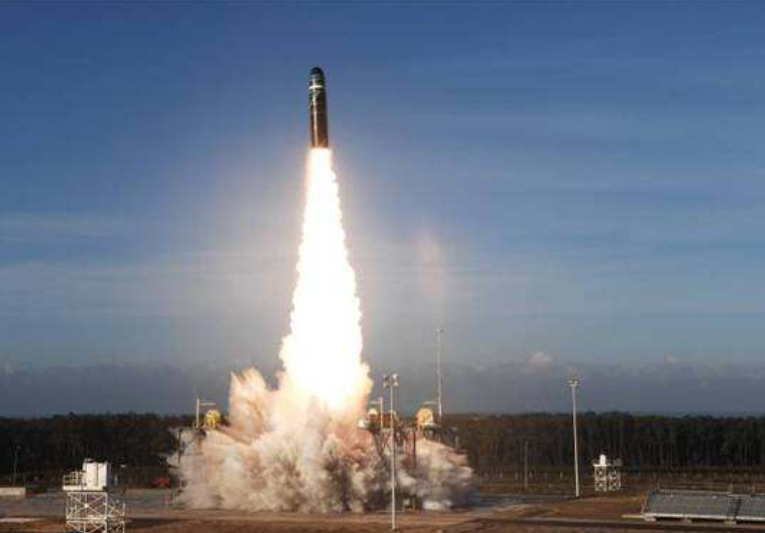
The economy of the Fifth Republic in the first half of the 60s was on the rise, which allowed to allocate the necessary financial resources and at the same time implement several very expensive programs. Two years after the first test nuclear explosion, an atomic bomb suitable for practical use came into service. After it became clear that the French military-industrial complex was able to independently create nuclear explosive devices and their delivery systems, the Kaelkansch-1 long-term development plan for nuclear forces was envisaged, providing for the formation of a full-fledged nuclear triad including aviation, marine and land components.
Initially, the SO-4050 Vautour II front bomber was considered to be the carrier of the atomic bomb, but this aircraft had a low flight speed and a combat radius that was insufficient for carrying out strategic tasks. Almost simultaneously with the start of work on the French nuclear arms Dassault has begun designing a Mirage IV supersonic long-range bomber.
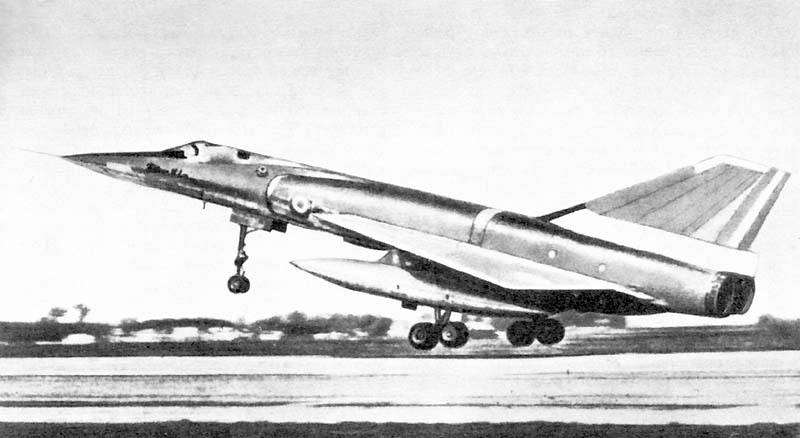
The prototype bomber took off in June 1959, that is, before the start of the French nuclear tests. The first production aircraft was handed over to the customer in the 1964 year. The Mirage IVA bomber with a maximum take-off weight of 33 475 kg, without refueling in the air, had a combat radius of 1240 km, and developed at high altitude the speed of 2340 km / h. In total, 66 bombers were built, some of which were later converted into reconnaissance aircraft.
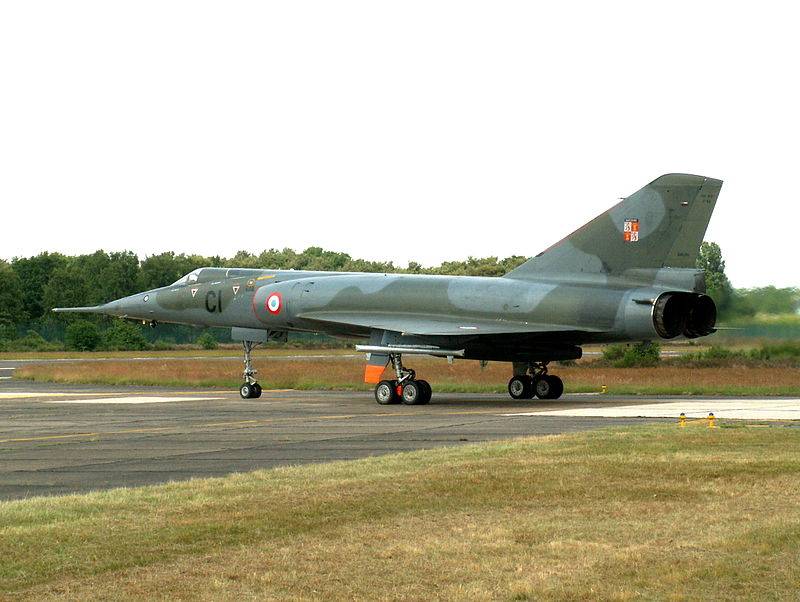
In 80-x years 18 aircraft upgraded to the level of Mirage IVР. It was the “four” from the company “Dassault” that became the first French strategic carrier of the implosive AN-11 plutonium bomb with a power of 70 CT. According to French media, a prototype of this nuclear bomb was tested during Operation Blue Jerboa 13 February 1960. A total of nine AN-40 11 bombs were deployed at nine French air bases. Each Mirage IVA bomber could carry one such bomb weighing about 1400 kg in a special container. The AN-11 free-fall nuclear bombs were assembled from 1962 to 1967 a year. But this nuclear munition did not satisfy the military according to safety criteria, since there was a likelihood of its unintended initialization in an emergency. In this regard, the production of the AN-1968 bomb began in 22, the reliability and safety of which was confirmed during the “hot” and “cold” tests in French Polynesia.
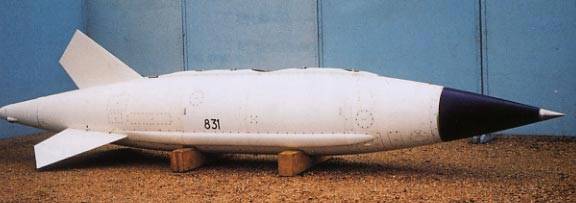
The AN-22 bomb also used a plutonium charge with energy output up to 70 kt in TNT equivalent, but its weight was reduced to 700 kg. Given that the French nuclear forces were in constant readiness, there were at least 36 Mirage IV bombers, there were 40 nuclear bombs AN-22 in the nuclear cellars. The operation of the free-falling AN-22 bombs in the French Air Force continued until the 1988 year, after which they were driven out by supersonic ASMP cruise missiles (france. Air-Sol Moyenne Portee - medium-range supersonic cruise missile). The 860 kg rocket had a liquid direct-flow jet engine, which accelerated it to 2300 speed - 3500 km / h, depending on the flight profile. Depending on the altitude and speed, the launch range was within 90-300 km. The rocket was equipped with a TN-81 thermonuclear warhead, with an explosion power adjustable within 100-300 CT. Between 1986 and 1991, the 80 TN-81 and 90 missile warheads were assembled. The upgraded Mirage IVP became the carriers of the ASMP KR.
In addition to missile weapons, which allowed not to enter the zone of destruction of medium-range anti-aircraft missile systems, eighteen upgraded bombers received new navigation and communications equipment, as well as jamming stations to counter Soviet air defense systems. The Mirage IVP bombers, armed with ASMP cruise missiles, continued to operate until 1996.
Given the relatively small range of French bombers, which is more likely to be characteristic of tactical carriers, KS-135 refueling aircraft were purchased in the United States. It was assumed that they would refuel the Mirages along the route, before approaching the air defense borders of the Eastern bloc countries. Given the small likelihood of bombers breaking through the airspace of the Warsaw Pact countries, two routes were considered the main in the event of strikes on the territory of the USSR - the southern and the northern ones. The southern route theoretically made it possible to operate on the territory of Crimea and Ukraine, and when breaking through from the north, Kaliningrad, Leningrad and the Baltic were in the reach zone. However, from the very beginning there were no special illusions regarding the ability of a single high-altitude bomber to break through the Soviet layered air defense system, and therefore, in addition to the aviation component in France, in the 60s, they began to create mine-based ballistic missiles and an atomic submarine missile fleet. The development of French nuclear weapons delivery vehicles was carried out mainly on the basis of self-reliance. The French, deprived of American rocket technology, were forced to design and build ground and sea-based ballistic missiles themselves. However, despite the lack of support, and sometimes overt opposition from the United States, French scientists and engineers managed to achieve serious success. The development of their own ballistic missiles to some extent spurred the development of French national aerospace technologies, and unlike Great Britain, France has its own rocket range and spaceport.
Shortly after the end of the Second World War, the construction of the French rocket test center and later the Hammodir cosmodrome began in Algeria. It was located in the western part of Algeria, near the city of Bechar. Tactical and research missiles, including the Diamant-A launch vehicle, which launched the first French satellite Astérix into orbit on November 26, were launched at the missile range. Although the three-stage rockets of the “Diamant” family could realize the intercontinental range for emergency delivery of a nuclear warhead, they did not fit, as they had a long time before launching, and could not be in a long state of charge.
After granting independence to Algeria, the tests of French ballistic missiles were transferred to the Biscaros test range located on the shores of Biscay. Despite the contradictions with the United States, the states that belonged to the Warsaw Pact were considered the main opponents of France, and there was no need to create an intercontinental ballistic missile. This made it possible to create a relatively simple solid-fuel two-stage ballistic missile of medium range. In the second half of 60, French aerospace firms already had experience in creating solid propellant jet engines and solid fuel recipes. At the same time, the command of the French strategic forces to speed up the development process of the first silo-based MRBM, consciously agreed with the simplification of the guidance system. In the specified tactical and technical characteristics, the circular probable deviation was set within 2 km, with a launch range of at least 3 000 km. However, in the process of finishing the rocket, the CER was able to be halved.
Rocket prototype test launches began in 1966. It took more than four years to complete the rocket complex called the S-2, up to the level of a serial sample and flight tests, and 13 launches.
The S-2 medium-range ballistic missile had a launch mass of 31,9 T and carried a single-unit MR-31 nuclear warhead with an 120 CT power. As foreign experts in the field of nuclear weapons write, the nuclear warhead capacity of the MR-31 was actually marginal for a plutonium-based nuclear weapon. Taking into account the fact that the claimed QUO BRSD S-2 was 1 km, this rocket was effective against large relatively poorly protected, areal political-economic and military targets in the territory of the Warsaw Pact and the USSR.
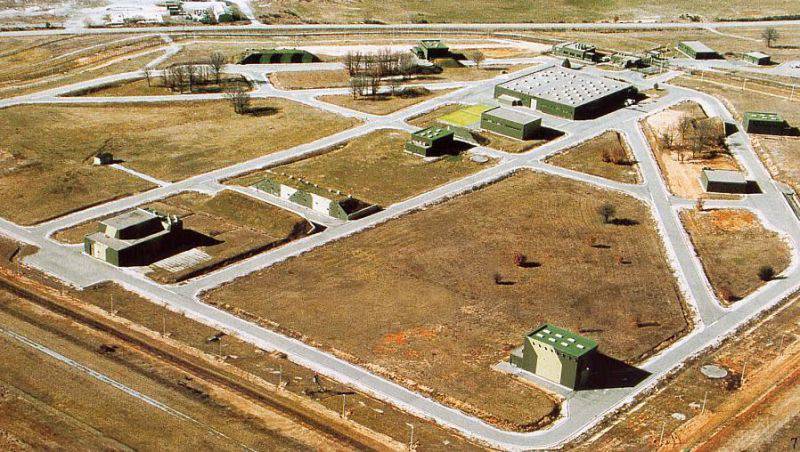
After the start of serial production, the number of MRBMs planned for deployment was reduced from 54 to 27. This was due to the fact that by the time the S-2 was put into service, this rocket did not fully meet modern requirements. The construction of protected mine launchers in southern France on the Albion plateau began in the year 1967. A total of 18 silos was built around the Saint-Cristol airbase. For the delivery of ballistic missiles from the missile arsenal to the position area, special wheeled transporters were used.
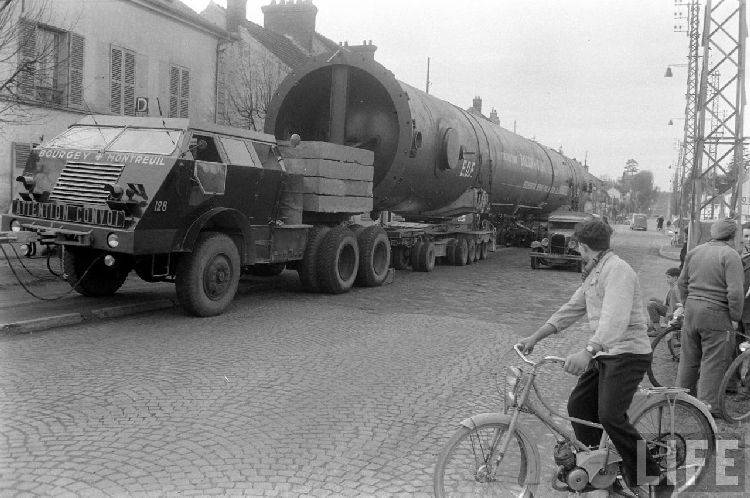
The medium-range S-2 French ballistic missiles were located in single-launch mine launchers with a depth of about 24 m, approximately 400 meters away from each other. Each shaft is designed for an overpressure shock pressure of 21 kg / cm ². The shaft was closed on top of a movable reinforced concrete lid with a thickness of 1,4 m and a weight of about 140 t. The rocket was mounted on a launch pad mounted on a suspension cushion system in the form of ring outlines and cables that were passed through blocks and connected to four hydraulic jacks on the floor of the mine, intended leveling the launch pad.
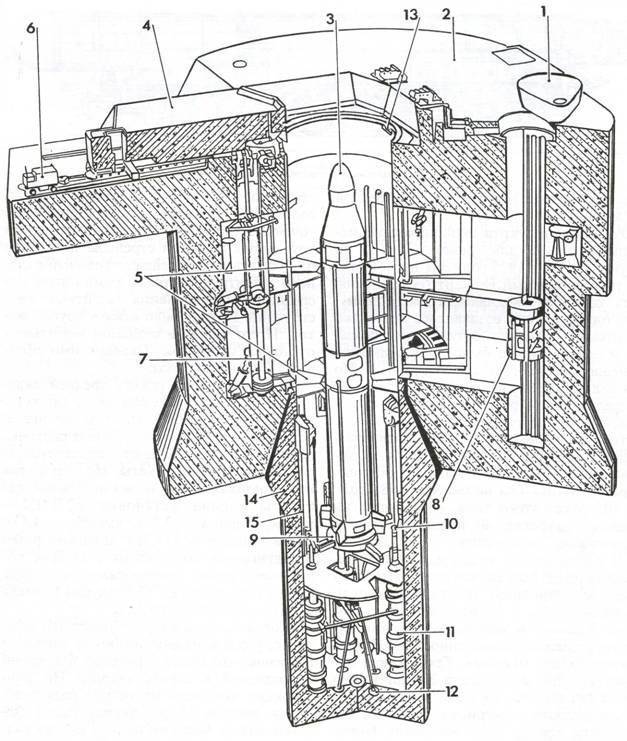
1 - concrete protective roof access hatch; 2 - eight-meter mine top of high-strength concrete; 3 — S-2 rocket; 4 - movable protective roof mine; 5 - the first and second tiers of service platforms; 6 — protective roof opening device; 7 - counterweight depreciation system; 8 — lift; 9 - supporting ring; 10 — mechanism for tensioning the rocket suspension cable; 11 - spring support automation system; 12 - support at the bottom of the mine; 13 - end closure of the protective roof; 14 - concrete shaft shaft; 15 - steel shell of the shaft
During the construction of silos, special steels and reinforced concrete grades were used. Thanks to the use of general and local depreciation systems, placement of rocket mines in strong rocks at a great distance from each other, multiple duplication of communication and control systems, the overall resistance of the complex to the damaging factors of a nuclear explosion was very high for that time. ShPU MRSD S-2 held the first place in terms of security, leaving behind even a number of American and Soviet complexes with silo-based ICBMs. Each group of 9 silos S-2 united into one squadron. The control of mine launchers was carried out from its own command post, located at great depth in the rocks and equipped with effective depreciation systems. In the process of designing and building missile positions, much attention was paid to increasing combat sustainability, for which multiple duplicated communication channels were created, both with each missile shaft, and with higher levels of command and control. During combat duty, the missiles were in high readiness for use — the launch time from full combat readiness did not exceed one minute. The control of the technical state and the launch of the missiles was carried out remotely. The round-the-clock duty at the command post bore a shift of two officers.
The first squadron of nine silos with the S-2 MRBD began combat duty in the middle of 1971, and the second squadron - at the beginning of 1972. However, given the fact that at the beginning of the 70s in the USSR, active work was being done on the creation of anti-missile systems, there was a significant likelihood that the French S-2 ballistic missiles equipped only with a single-piece warhead would not be able to perform a combat mission. In this regard, even before the deployment of the S-2 BRSD, the French military-political leadership decided to create a more advanced medium-range missile system equipped with anti-missile defense capabilities and having higher tactical, technical and service-operational characteristics. It was necessary to increase the resistance to the damaging factors of a nuclear explosion, range, accuracy and throw weight. The old and new missiles should have a greater degree of unification, use the same components and assemblies, and the mine launchers already built ,. As a result, the S-3 BRSD being created became a conglomerate of the S-2 rocket adopted for service and a projected ballistic missile designed to equip the M-20 submarines. According to the decision, the S-3 rocket had to replace on duty its predecessor, the S-2 rocket, in a one-to-one ratio.
The tests of the prototype MRSD S-3 at the Biscaros test site began in December 1976. From December 1976 to March 1979, 8 test launches were performed, which resolved all issues that arose. In July, the 1979 from the Biscarros test site was launched as a test launch of the S-3 MRS, randomly selected from a mass batch of missiles intended for combat duty.
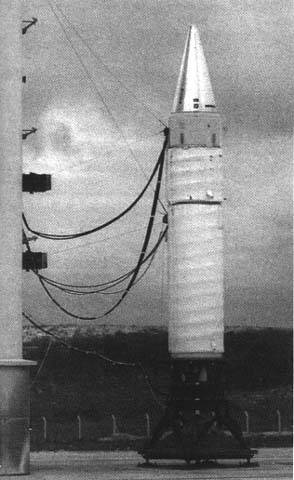
Unlike its predecessor, the S-3 rocket carried a new thermonuclear monoblock warhead, covered on the active part of the flight by the head fairing, which significantly reduced aerodynamic resistance and vulnerability from the damaging factors of a nuclear explosion. The head fairing was unified with the head fairing of the French M20 SLBM. BRSD was equipped with a TN-61 single-core thermonuclear warhead with an 1,2 MT power, which was more resistant to PFYAV than the MR-31 MS, and also had increased safety during transportation and storage.
After Charles de Gaulle left the presidency in April 1969, the new leadership of France, led by Georges-Jean-Raymond Pompidou, set out to restore military-technical and political cooperation with the United States. The TN-60 and TN-61 thermonuclear warheads, designed for the French S-3 MRBM and M20 SLBMs, were built with American consulting support, and the French were able to gain access to some critical technologies and special equipment. In the middle of 60, the US authorities imposed an embargo on exports to France of the CDC 6600 supercomputer, which France planned to use to carry out calculations during the development of thermonuclear weapons. In response, 16 July 1966, Charles de Gaulle announced the start of developing his own supercomputer, in order to ensure the independence of France from the import of computer technology. However, shortly after de Gaulle counted being president, despite a formal export ban, the American leadership "closed its eyes" and the supercomputer was still able to be imported into France through a fake commercial firm.
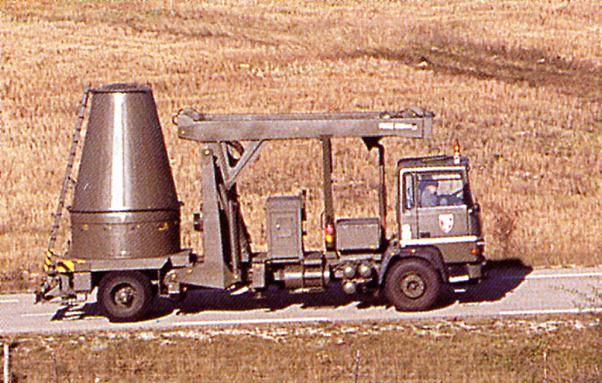
The new TN-61 thermonuclear warhead was more high-speed, and provided less dispersion in the atmospheric section of the trajectory and greater resistance to the effects of PFYAV. In a number of sources it is said that it was covered with a special radio-absorbing coating and contained EW equipment for creating radio interference with a missile defense radar. On the MRSD S-3, a new inertial control system was used, which had an increased resistance to external influences and provided the KNO 700 m, with a launch range of 3700 km. The rocket got the opportunity to fire at one of several targets, whose coordinates were previously loaded into the memory of the guidance system. Thanks to the use of new technical solutions, materials and more energy-intensive solid fuel, while simultaneously increasing the launch range and the size of the payload payable, the S-3 rocket became lighter by about 5 tons and shorter by almost a meter.
In 1980, the new missiles began to replace the unsatisfying S-2 MRBM. At the same time, mine launchers were significantly strengthened and improved. The main emphasis was placed on increasing the security from the damaging factors of a nuclear explosion: seismic dynamic displacement of the soil, excessive pressure in the front of the shock wave, electromagnetic pulse, flow of elementary particles. The new complex received the name S-3D (French Durcir - hardened).
At the end of the 80-based silo-based MRS, the S-3 was planned to be replaced by a new S-4 rocket with a launch range of up to 6000 km, which in fact was the land version of the MXNXX SLBM created in those years. However, the liquidation of the Warsaw Pact and the collapse of the Soviet Union led to the fact that the threat of global war fell to a minimum, and the program for the creation of the first French ICBM of the mine-based base was curtailed.
In 60-s in France, work was carried out to create tactical nuclear weapons suitable for use on the battlefield in the operational depth of the enemy defenses. The carriers of tactical nuclear bombs were Dassault Mirage IIIE fighters, SEPECAT Jaguar A fighter-bombers and Dassault-Breguet Super Еtendard fighter-bombers.
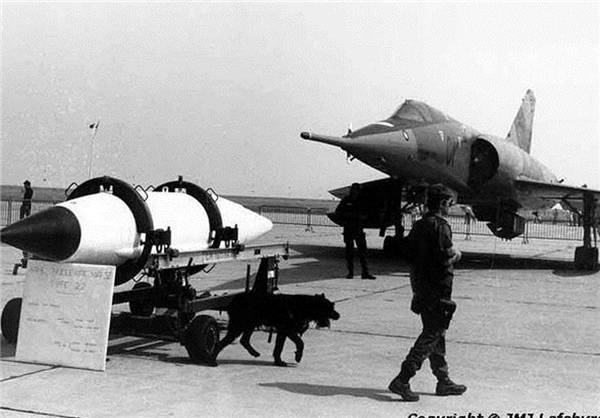
The first French tactical nuclear bomb was the AN-52. This “special” aviation munition was produced in two versions, with a mass of 455 kg and a length of 4,2 m, the charge power was 8 or 25 кт. The bomb was equipped with a braking parachute. The standard height of the explosion is 150 m. The exact number of AN-52 bombs is not known, various sources indicate that they were collected from 80 to 100 units. Approximately 2 / 3 of them had power 8 kt. These nuclear bombs were in service with 1972 on 1992 year.
According to the French nuclear doctrine, aircraft carrying nuclear bombs could solve both tactical and strategic tasks. In the initial stage of operation of the “nuclear” Dassault Mirage 2000N fighter-bomber, thirty vehicles of this type were adapted to deliver free-falling bombs. However, after the last Mirage IVP strategic bombers were written off, all the existing Mirage 2000N and part of the deck-mounted Super Etendard were armed with ASMP cruise missiles. According to French data, the “nuclear squadrons” of the Air Force and Navy received 80 cruise missiles.
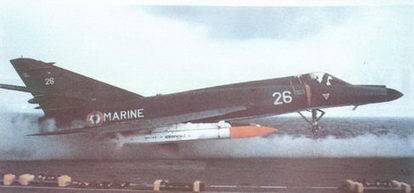
The role of these carriers was mainly to be in the event of a full-scale military conflict to become a means of the “last warning” of the aggressor before the use of strategic nuclear weapons. The use of tactical nuclear charges was envisaged in case of impossibility of repelling aggression by conventional means. This was to demonstrate the determination of France to defend itself by all possible means. If the limited use of tactical nuclear weapons did not bring the proper result, a massive nuclear strike was supposed to be carried out by all available MRBMs and SLBMs on enemy cities. Thus, the French nuclear doctrine provided for the possibility of selective use of various nuclear weapons and included elements of the concept of "flexible response".
One of the main methods of Mirage 2000N breakthrough to the object of a nuclear strike is a throw at extremely low altitude. For this purpose, the aircraft is equipped with the Bplc Dasault Electroniqué / Thompson-СSF Аntilopе 5, capable of working in the modes of mapping, navigation, following the terrain. It provides automatic flight with a rounding of the terrain at an altitude of about 90 m at speeds up to 1112 km / h.
In 2009, the ASMP-A missile with a launch range of up to 500 km and maximum airspeed at high altitude 3M was adopted by the French Air Force. Until 2010, the ASMP-A was equipped with the same TN-81 warhead as the ASMP missile, and with the 2011, the warhead of the new TNA generation. This thermonuclear warhead, being lighter, safer in operation and resistant to the damaging factors of a nuclear explosion, has the ability to control the power of an explosion within 20, 90 and 300 кт. The possibility of stepwise power control significantly increases the effectiveness and flexibility of the use of a rocket in the case of use against targets of various levels of security and area parameters and allows to reduce collateral damage to its troops.
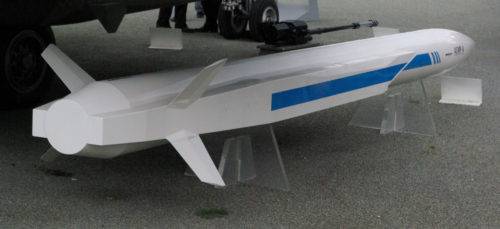
After in 2016, the Super Etendard carrier-based fighter-bombers were decommissioned, the Dassault Rafale M Standart F3 fighter-jet fighters were the only sea carriers of cruise missiles. After the write-off of the Mirage 2000N bomber’s “nuclear” fighters, they will be replaced by two-seater specially modified Rafale B. In total, there are about 60 ASMP-A cruise missiles for suspension on the Mirage and Rafali in France. It should be said that France is the only European country where cruise missiles with a thermonuclear warhead are in service. In the middle of 90-x structural changes occurred in the aviation component of the nuclear forces, and an independent Strategic Aviation Command was formed, which included all aircraft carrying nuclear weapons, including the deck ones.
In parallel with the creation of tactical nuclear bombs in France, work was carried out on ground-based tactical missile systems. In 1974, the Pluton short-range mobile missile system with a solid rocket weighing 2423 kg was adopted. The missile was equipped with an inertial guidance system, had a launch range from 17 to 120 km and carried a nuclear warhead AN-51. This warhead had a lot in common with the tactical nuclear bomb AN-52 and was also produced in two versions - 8 and 25 CT. In a number of sources it is said that the rocket QUO was 200-400 m, however, it is not clear what the range is.
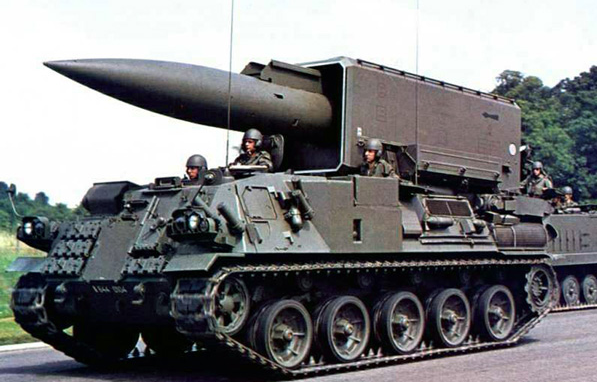
The base for the mobile complex was the medium chassis tank AMX-30. A mobile launcher could reach speeds of up to 60 km / h on the highway and had a range of 500 km. The mobility and patency characteristics of the Pluto fuel and energy complex were approximately at the same level with tanks and infantry fighting vehicles. After arriving at the position, preparation for shooting took no more than 10-15 minutes. It took about 45 minutes to assemble and load the rocket from the wheeled conveyor onto the tracked launcher.
From 1974 to 1978, five missile regiments were formed in the French Ground Forces. Each regiment in service consisted of 8 self-propelled launchers. The regiment consisted of three hundred units of other equipment and about a thousand personnel.
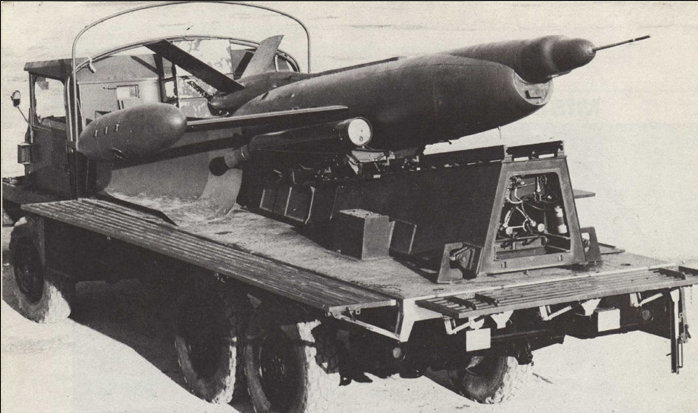
As part of the French TRK "Pluton", an unmanned aerial vehicle Nord Aviation R.20 was used to clarify the coordinates of the target. This UAV developed speeds up to 900 km / h, had a ceiling of 12 m and could stay in the air for 000 minutes. In total, the French army in the 50s received 70 reconnaissance drone R.20. The image received from the UAV was transmitted via radio to the regimental command post. After that, the received information was processed on the Iris 50 processors and loaded into the memory block, the information in which was stored on ferrite rings.
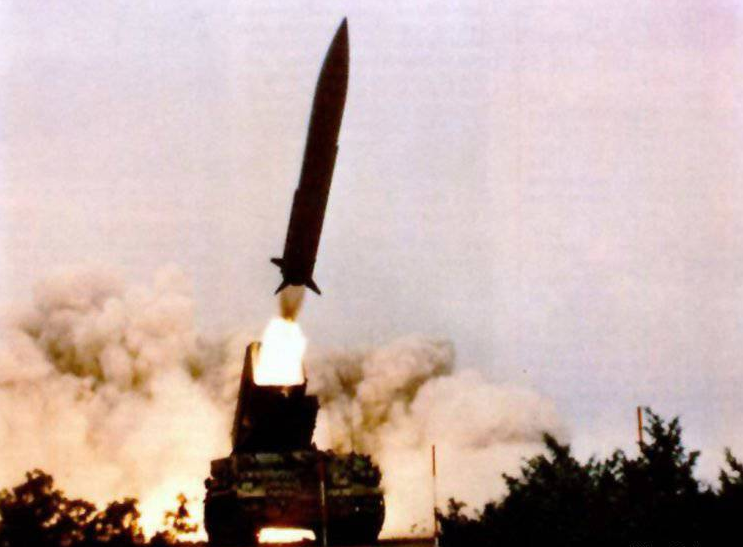
The Pluton missile system was a means of supporting divisions and corps. Warheads of different power intended for different purposes. A nuclear charge with a power of 8 CT could be used for targets on the front line - for armored columns and artillery positions. The warhead in 25 CT was to be used for targets remote from the front line — transport hubs, ammunition depots, equipment and weapons, headquarters and command and control points. In addition, the tactical missile system, as in the case of aviation tactical nuclear bombs, was assigned the task of the last “warning” of the aggressor.
By the end of 70, the first French tactical missile system began to become obsolete. First of all, the military was not satisfied with the short launch range, which did not allow hitting targets on the territory of the GDR. In connection with this, the Super Pluton development project was launched. Work in this direction continued until the 1983 year, but later the improvement of the Pluton SEC was considered unpromising, and it was decided to develop a new tactical missile system from scratch. Unlike the "Pluto" on a tracked base, they decided to make a new missile system on a wheeled cargo chassis. This option, of course, reduced the permeability on weak soils, but increased the mobility of the complex when driving on the highway. In addition, the use of launchers for two missiles made in the form of a towed trailer reduced the cost of the missile complex, increased ready-to-use ammunition and made it difficult to identify by means of space and aviation reconnaissance.
The flight tests of the missiles for the complex, which later received the designation Hadés (French Hades) began in the 1988 year. The originally planned flight range of a solid-fuel rocket with a mass of 1850 kg and a length of 7,5 was 250 km. However, thanks to the progress in the field of solid fuel and a sufficiently perfect inertial guidance system, it was possible to reach the target launch range to 480 km. The circular deviation in this case was 100 m. A combined guidance system was also developed, using signals from the American GPS satellite positioning system to adjust the flight path of the rocket. In this case, the missile’s deviation from the aiming point did not exceed 10 meters, which allowed the use of new French OTRK for effective destruction of such powerful targets as submerged and reinforced concrete command posts, nuclear cellars and ballistic missile silo launchers. However, the French did not hide the fact that the Aid missile systems were primarily intended for the destruction of targets on the territory of the GDR. Such an approach caused objections in the FRG, since, according to the German military and politicians, the psychological barrier to the use of nuclear weapons was reduced and there was a high probability of provoking a preemptive strike from the USSR.
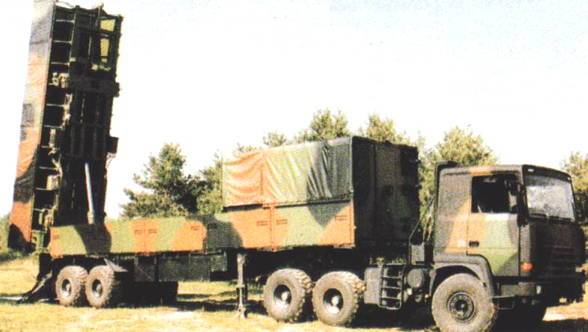
According to the original plan, the troops planned to deliver 120 missiles equipped with a TN-90 thermonuclear warhead. Like other French fusion munitions of the second generation, this combat unit had the possibility of a step change in the power of the explosion. According to French data, the maximum energy release TN-90 was 80 kt. The assembly of the TN-90 began in the 1990 year, in total the 180 warheads were ordered, but already in 1992, their production was discontinued. For two years, managed to put three dozen TN-90. The reduction of the order for the production of thermonuclear warheads was due to the abandonment of the full-scale production of the Aid OTRK. Adoption of the new French OTRK coincided with a period of reduction of international tensions. Thanks to the pliability of the “democratic” Russian leadership, our military contingents with unreasonable haste were withdrawn from the territory of Eastern European countries. Under these conditions, it was considered justified to put 15 launchers and 30 missiles into the missile units of the French Land Forces. However, already in 1992, all existing Aid launchers and missiles were sent to the storage base. Taking into account advances in the field of electronics, attempts were made to give this complex "non-nuclear status." The rocket was supposed to install a heavier and stronger conventional warhead and provide it with a television guidance system. In this case, the launch range of the OTRK Hadés was reduced to 250 km and the main purpose of the complex was to fight against important and well-protected engineering objectives. However, this project did not find support from the government and in 1996, President Jacques Chirac announced that, within the framework of the French nuclear deterrent forces, all the operational tactical complexes and the TN-90 thermonuclear warheads assembled for them are to be disposed of. Given that, in the 1993 year, the tactical missile systems "Pluto" were decommissioned at the end of 90, France was completely deprived of ground-based ballistic missiles.
Despite gaining access to nuclear weapons, France had no chance of winning a military confrontation with the Soviet Union and the Warsaw Pact countries. Relatively few French bombers and medium-range ballistic missiles with a high degree of probability could be destroyed by a sudden nuclear missile strike. In order to give its nuclear forces greater military stability and to guarantee the aggressor the inevitability of retribution, the French leadership decided to develop the maritime component of the nuclear triad. Officially, the intention to form the Marine Strategic Nuclear Forces Paris announced back in 1955 year. At the same time, the French seriously counted on American assistance in creating a nuclear reactor suitable for installation on a submarine of the Q244 project. The main weapon of the promising French SSBN was to be the Marisoult ballistic missile, similar in its characteristics to the UGM-27B Polaris A-2 US SLBM. However, after France’s withdrawal from NATO in 1966 from NATO, military-technical cooperation with the United States was reduced to a minimum, and there was no question of assisting in the creation of French strategic nuclear forces. Moreover, at a certain historical stage, France was viewed in Washington as a geopolitical rival. An attempt to create its own nuclear reactor operating on low-enriched U-235 was not successful. It soon became clear that such a reactor with a very low efficiency would simply not fit into the hull of the boat. For this reason, in the middle of 1958, the construction of the Q244 boat was first frozen and later completely canceled. This was not the only blow to the created French NSNS, at the beginning of 1959, it became clear that the design weight and size characteristics of the Marisoult SLBMs were excessively exceeded and the development of the missile was stopped. But the failure did not embarrass the French. Despite the fact that their scientists and designers did not have the necessary nuclear technologies, were deprived of US support and had to solve three main tasks in a short time: the development of the ship’s nuclear power plant, the creation of a submarine ballistic missile and, finally, the design of the SSBN itself. eventually coped with the task.
In March 1964 of the year at the shipyard in Cherbourg took place the laying of the lead submarine Le Redoutable (Rus. Grozny, Awesome). The construction of the first French SSBN went with great difficulty, it took a lot of time to fine-tune the GEC Alsthom PWR reactor of a water-to-water type with forced circulation of coolant with an 16 power of 000 hp. The submerged displacement of the boat was 8 913 t, length - 128,7 m, body width - 10,6 m, speed - up to 25 nodes, maximum depth - 250 m. Crew - 128 people. From the outset, the developers paid great attention to reducing the level of noise, which increased the survival rate of SSBNs on combat patrols.
The main caliber of the boat was the solid-fuel two-stage ballistic missile M1. With a length of 10,67 m and a mass of about 20 000 kg, it had a stated launch range of 3000 km. However, in a number of modern sources it is said that during test and test launches, not all missiles were able to confirm the declared range, and in practice the real area of attack of the first French SSBN missiles slightly exceeded 2000 km. The M1 SLBM was equipped with an MR 41 warhead. This monoblock thermonuclear warhead weighed 1360 kg and had a power 450 CT. The circular deviation when shooting at a maximum range exceeded 1 km. In total, there were 16 submarine-launched missiles on board the boat.
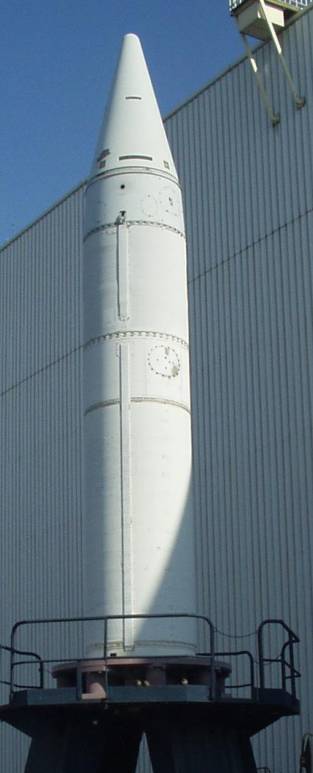
The test launches of the M1 missiles were carried out at the Biscaros rocket center on the shore of the Bay of Biscay. To do this, a special well with sea water 100 meters deep was built here, into which a stand is submerged, which is a sealed compartment with a rocket inside and a set of relevant equipment designed to test rocket launches from a submerged position. In the future, it was here that all French ballistic missiles designed to launch from submarines were tested.
The launch of the strategic headquarters of the Redoubt-type submarine took place on March 29 of the year 1967, and it was officially introduced on December 1 on the 1971 of the French Navy. Almost eight years have passed since the laying of the boat, before its formal introduction into service. Of these, at the shipyard - five years, in completion afloat - a year and a half and the same amount was required for the development of equipment and weapons before putting it into the fleet combat structure.
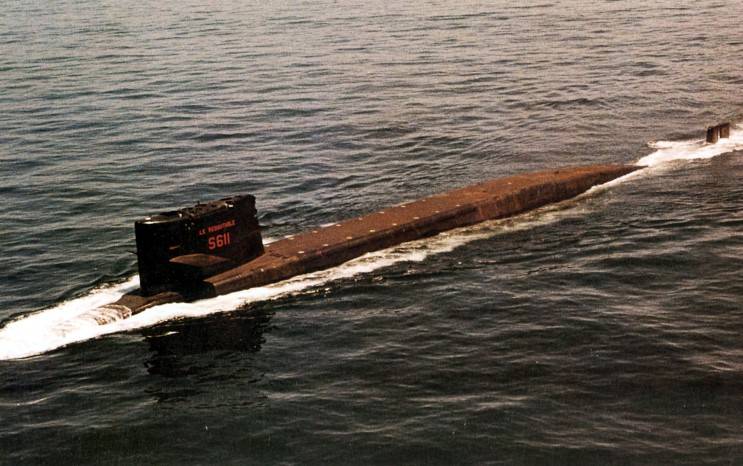
In 1967, the nuclear submarine was even returned to the shipyard in order to fix the identified deficiencies in the structure on the slipway. Subsequently, the construction time of subsequent SSBNs of this class was reduced to five to six years. In addition to the head of the French Navy received four more nuclear submarines of this project. Le Redoutable’s first combat patrol took place in January 1972. Already in January, 1973, the same type of boat Le Terrible (S612) was commissioned. Like the head in a series of SSBNs, she carried the 16 PRPP M1. However, the rocket created in a great rush did not suit the French submariners in a number of parameters. In 1974, the improved M2 rocket was put into service. The starting mass and length of the new SLBM remained the same as the M1. Also did not change the type of thermonuclear warhead and throw weight. Apparently, the main changes were aimed at increasing the launch range and increasing operational reliability. This was achieved through the use of more energy-intensive rocket fuel formulations and modern semiconductor components. According to French sources, the launch range of the 2 SLBMs exceeded 3000 km. A further development option for the M2 rocket is the M20. The missile put into service in 1977 retained the mass and dimensions of the M1 / M2 SLBMs, but carried a new TN 60 thermonuclear warhead with a 1,2 power of Mt and missile defense weapons. The launch range was increased to 3200 km. The M20 SLBM was in service from 1977 to 1991 a year. A total of 100 missiles of this type were built.
As the launch of new submarine missile carriers, it became obvious that, in connection with the strengthening of the Soviet anti-submarine forces, they needed more long-range and accurate weapons with a greater likelihood of overcoming Moscow’s anti-missile defense system. At the beginning of the 80-x, at the Biscaros test site, test launches of new-generation SLBMs, the M4, began. Beginning with the 1987, during the next overhaul, all boats, except the heavily worn Redoubt, which was withdrawn from the fighting crew in 1991, underwent upgrades to accommodate the missile system with the M4А SLBM, with a launch range of 4000 km. The new three-stage rocket with a launch weight of 35 000 kg carried six thermonuclear TN-70 warheads on 150 Ct each. The warheads ensured the defeat of large area targets located in a rectangle with dimensions 120x150 km. A total of 90 TN-70 warheads were assembled, which were in service until the 1996 year. At the end of 1987, the MNNXXB missile with a launch range increased to 4 km was put into service. It was equipped with six thermonuclear TN-5000, which at the same power was much lighter than the TN-71. Theoretically, more warheads could be placed in the main compartment of the MNNXX SLBMs, but the mass reserve was used to accommodate decoys and a transmitter of active interference.
Taking into account the early decommissioning of the Reduttable SSBN in June 1982, after a five-year break at the shipyard in Cherbourg, one more boat named Le Inflexible (French - Inflexible) and the call sign S615 were laid.
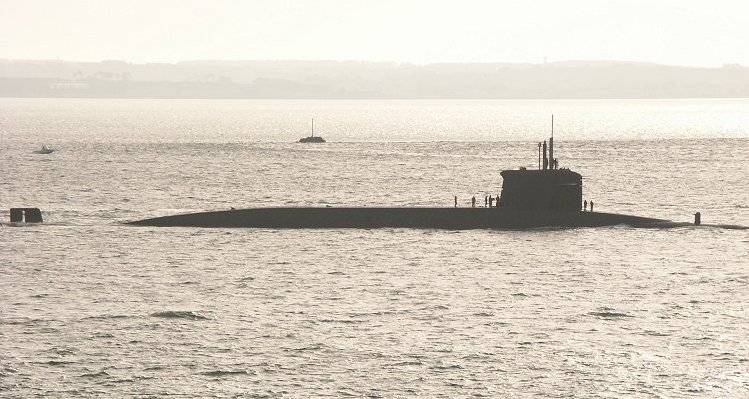
When designing the next nuclear missile boat of the year 1985, which was commissioned in April, the operating experience of previously built SSBNs was taken into account. Eflexible submarine built on an improved design was distinguished by a number of design features. In particular, the hull was strengthened, which in turn made it possible to increase the maximum immersion depth to 300 m, changed the design of the shafts of launchers to accommodate the M-4В missiles, and extended the period for replacing the reactor core. In fact, the Le Inflexible SSBN became the second generation boat, which filled the gap and allowed the French shipbuilders to work out new technical solutions and weapons before the construction of third generation boats.
In the course of modernization completed in 2001, new mines with МХNUMX SLBMs were installed at “Inflexible”. The M45 ballistic missile outwardly practically did not differ from the MXNUMHA / B, it had the same weight and dimensions. But after another improvement in the propulsion system, the rocket became capable of hitting targets at a distance of up to 45 km. Six individual-targeting warheads with TN-4 warheads and missile defense weapons were used as payloads. The power of the TN-6000 thermonuclear warhead is not disclosed, but according to expert estimates it is within 75 CT. From the information published in the journal Bulletin of the Atomic Scientists, it follows that as of 75, there were 110 TN-2005 warheads in the French NSLM.
With a relatively small number of French naval strategic forces, the intensity of the combat service of missile submarines was very high. In the period from 1983 to 1987, on a combat patrol, as a rule, there were three boats at the same time, one on duty at the pier in Il-Long, and two more at various stages of a major overhaul in the shipyards of Brest or Cherbourg. On the boats carrying combat duty at sea was the destructive power of a total equivalent of approximately 44 Mt. The positional areas of the French SSBNs during the Cold War were located in the Norwegian and Barents Seas or in the North Atlantic. The duration of the trip was approximately 60 days. On average, one French SSBN carried out three patrols per year. Presumably, each of the boats made 60 patrols for the entire service life. For all the boats that were part of the Force océanique stratégique (French Ocean Strategic Forces) were formed two crews - "blue" and "red", alternately replacing each other in battle campaigns.
Operation of the Eflexable SSBN continued until January 2008. Since then, four boats built after the "Redoubt" have been waiting for their turn for recycling in an isolated area known as the "Napoleon III Basin" in the vicinity of the naval base Cherbourg. The headline in the series of SSBs Redoubt, after the decommissioning and cutting of the reactor compartment, was turned into a museum and installed on the shore near the seaport in Cherbourg.
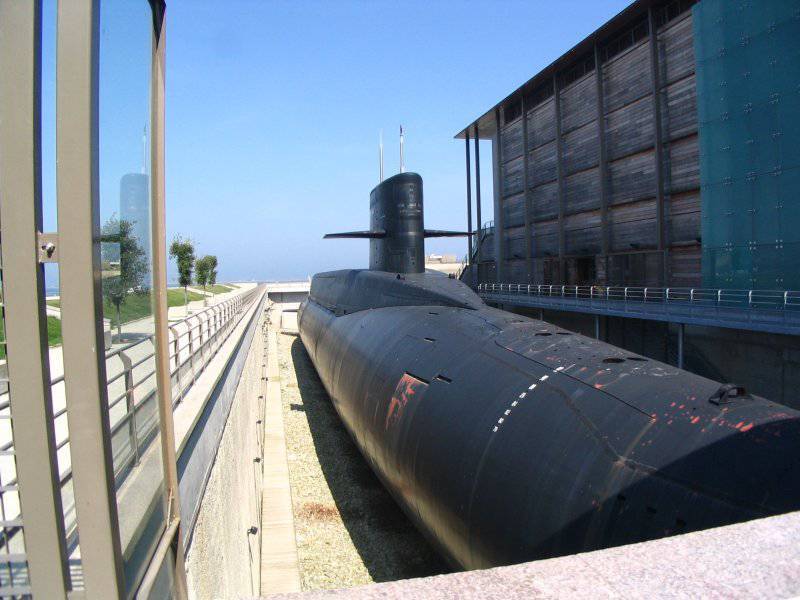
In general, the French first-generation SSBNs were quite appropriate for their purpose. According to foreign sources, the French nuclear-powered submarines surpassed the first Soviet strategic missile submarines of the 658 and 667A. In terms of unmasking physical fields, the first five Eflexable-type SSBNs approximately corresponded to ave. 667BD.
In 1982, the design of next-generation missile submarines for the replacement of aging Redoubt type submarines was launched. In 1986, the program was approved for the development of the French NCJA for 1987-2010 years, according to which it was planned to build six PLAPB new project. However, later, in connection with the reduction of international tensions and with a view to financial savings, it was decided to limit the construction of four boats.
The “heart” of the submarines of the type Le Triomphant (French Triumphant, Victorious) was the K-15 water-cooled 20 000 HP reactor. Since French reactors operate on relatively poorly enriched fuel, the service life of fuel elements is approximately 5 years. However, the French do not consider this a disadvantage, since simultaneously with the replacement of nuclear fuel, the boat every 5 years is sent for repairs and upgrades. A special feature of the K-15 type reactor is the natural circulation of the coolant in the primary circuit. The advantages of such a technical solution is to reduce the noise level of the steam generating plant and the increased reliability of the reactor operation. It was also possible to increase the stealth of the boat by installing turbogenerators on a single depreciation platform. For mounting to the hull of the boat of all noise-generating mechanisms used depreciation pads. Each pump and engine, all power cables and pipes are placed in a sheath of vibration-damping elastic material. For potential sources of acoustic noise, a so-called two-stage vibration isolation was used. In addition, the traditional low-noise fixed-pitch propeller was replaced with a jet propulsion unit. In addition to increasing efficiency, the volomet reduces the "screw" component of noise. The propulsion nozzle guide plays the role of an acoustic screen that prevents sound from spreading.
During the development of a new generation of submarines, in addition to ensuring a high level of secrecy, great attention was paid to the ability of early detection of enemy anti-submarine defenses, which would have made it possible to start an evasion maneuver earlier. The ability to dive to a depth of 400 m also serves to increase the survival rate of the boat.
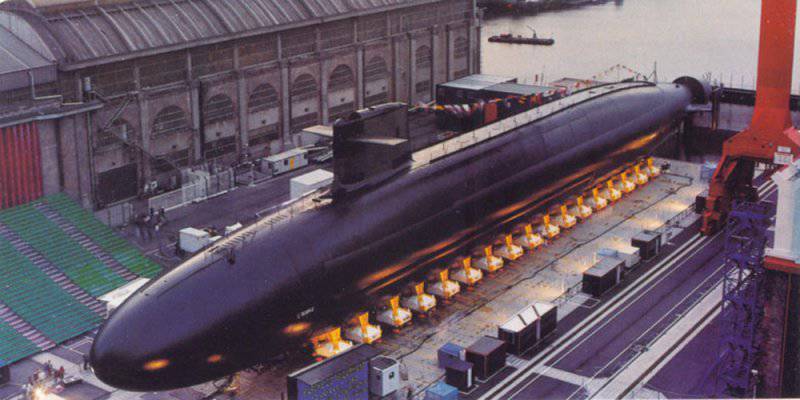
Bookmark SSBN Le Triomphant (S616) held 9 June 1986 of the year. The boat launched the 26 March 1994 of the year, and it entered the 21 March 1997 of the year. Boat 138 m long and hull width 12,5 m has an underwater displacement 14 335 t. The maximum speed in the underwater position - 25 nodes. Crew -121 people. As in the case of the Redoubt boats, there are two replaceable crews for new nuclear submarines. According to French data on the level of acoustic stealth, the Triumfan-type boats are superior to American submarine-borne Ohio-type submarines.
In the first three Triumfan type boats, the main weapon was the 16 SLBM M45. The last fourth boat of this type, Le Terrible (S 619), handed over to the 20 fleet of September, 2010, is armed with sixteen M51.1 SLBMs with a launch range of 8000 km. A three-stage solid-fuel rocket with a launch weight of about 52 t carries from 6 to 10 individual targeting warheads with TN-75 thermonuclear warheads and ABM breakthrough weapons. According to Western data, an astro-inertial guidance system is used, which provides a deviation from the aiming point of no more than 200 m. According to its combat capabilities and mass-dimensional characteristics, the M51.1 is comparable to the missile of the American Trident D5 system.
During scheduled repairs on the remaining boats, it is planned to replace obsolete M45 missiles with M51.2 with a launch range of up to 10 000 km. In this variant, TNT thermonuclear warheads with a power of 150 kt in TNT equivalent are installed. The KVO of new warheads in the event of firing at the maximum range is 150-200 m. Compared to the TN-75, the new warhead adopted by 2015 has increased reliability, increased resistance to ionizing radiation and a longer service life. By 2025, the M51.3 modification rocket is planned to be commissioned.
Satellite image of Earth Earth: Triumph-class SSBNs near the pier of the Il-Long naval base
The system of operation of strategic rocket carriers adopted in France allows to save on the supply of missiles and thermonuclear warheads, using missiles of disarmed submarines that are under repair to be used on armaments of boats on combat duty. Given that, at best, there are two French SSBNs on combat patrols in the sea, one is capable of shooting directly from the pier, and another is in scheduled maintenance and modernization, the French strategic forces constantly have 48 ballistic missiles. These SLBMs are capable of carrying at least 288 warheads with a total capacity of more than 32 Mt. Between 1972 and April 2014, French SSBNs conducted a total of 471 combat patrols. However, 15 patrols were completed ahead of time, or interrupted for a while due to technical problems or to evacuate injured or diseased crew members. According to forecasts in 2018, the submarine missile carriers of the Oceanic Strategic Forces of France must carry out 500 patrols.
To control the actions of submarine rocket carriers on combat patrols in July 1971, the communications center in Rune was commissioned. Commands aboard submarines that are submerged are transmitted using radio signals at ultra-low frequency. More than 70 000 tons of concrete was spent for the construction of the bunker, where the communications equipment and the staff on duty are located. The entrance to the bunker protects the door of armor steel capable of withstanding a close nuclear explosion. In the communications center for 40 people, there are autonomous sources of energy and water supply, as well as food supplies for 15 days. The antenna field spreads out within a radius of 1 km from the central mast 357 m high. Also to support transmitting antennas, there are six masts 270 m high and six 210 m high. Radio transmitters of the center at frequencies on 18,3 kHz, 21,75 kHz and 22,6 kHz transmit synchronization signals and precise of time. The frequency at which combat control signals should be transmitted is classified. The transmitter is directly controlled from the protected central command post of Ocean Strategic Forces located in the vicinity of the Brest naval base.
In 1998, a backup communications center began operating in Saint-Assisi. Previously, here was the transmitting center of the French telecommunications company Globecast. In 1991, the government bought this facility for the needs of the Navy. There are a total of 11 metal masts 250 m in this area.
Until July, 2001 had four specially modified C-160 Transall aircraft with ULF radio transmitters transmitting coded radio signals using towed antennas. Currently, in the event of the failure of stationary radio transmission centers, the use of mobile communication systems with antennas lifted into the air with the help of tethered balloons is envisaged.
Currently, France has a developed nuclear industry. Nuclear power plants are the main source of electricity in France and produce 77% of its production. In terms of the share of electricity generated at NPPs in the total energy balance of the country, France ranks first, and in terms of the number of reactors - second, with the 58 operating and one reactor under construction, second only to the US with their 100 reactors. It is no secret that plutonium is a by-product of reprocessing spent nuclear fuel. In addition to its own spent nuclear fuel, enterprises of the French company Kogema carry out reprocessing and enrichment of fuel cells supplied from NPPs in Germany, the Netherlands, Japan, Belgium and Switzerland. The amount of spent fuel received for reprocessing is about 1200 tons per year. Plutonium recovered from spent fuel is stored, and in the future it is planned to use it in fuel cells when generating electricity in promising new-type reactors.
At the beginning of the 21 century in France there were more than 100 carriers of nuclear weapons, which could be deployed to 400 thermonuclear charges. The number of warheads carried and stored was approximately 430 units. In March 2008, French President Nicolas Sarkozy announced a significant reduction in French strategic nuclear weapons. As a result of the reduction, the officially declared nuclear arsenal of Paris began to equal the 290 warheads. However, it is not clear whether this number includes tactical nuclear charges placed on aircraft carriers.
Officially, the production of fissionable materials for the production of new nuclear warheads in France was discontinued at the end of 90's. However, given the large amount of plutonium produced and accumulated at the two large radiochemical enterprises at Cape La Hague, and the production of tritium has not yet been curtailed, it is possible to collect more than 1000 nuclear and thermonuclear warheads in a short time. And in this respect, France even surpasses the United States. It should also be recognized that, if necessary, the scientific and industrial potential of the Fifth Republic allows in the foreseeable future to create ground-based ballistic and cruise missiles that meet the most modern requirements. At the same time, France is an active participant in the Nuclear Suppliers Group, whose goal is to limit the risk of the proliferation of nuclear weapons by establishing control over the export of key materials, equipment and technology; enters the Missile Technology Control Regime and is a party to the International Treaty on the Prevention of the Proliferation of Ballistic Missiles.
Based on:
http://rbase.new-factoria.ru/missile/wobb/s3/s3.shtml
https://www.capcomespace.net/dossiers/espace_europeen/albion/albion_ZL.htm
http://www.defens-aero.com/2016/03/escadron-de-chasse-2-4-la-fayette-fete-son-centenaire.html
http://www.popflock.com/learn?s=M20_(missile)
https://journals.openedition.org/rha/5312#ftn19
https://www.defense.gouv.fr/marine/operations/forces/forces-sous-marines/la-force-oceanique-strategique-de-la-marine-nationale
http://www.military-today.com/missiles/m51.htm
http://www.senat.fr/rap/r11-668/r11-668_mono.html#toc40
https://novainfo.ru/article/13487

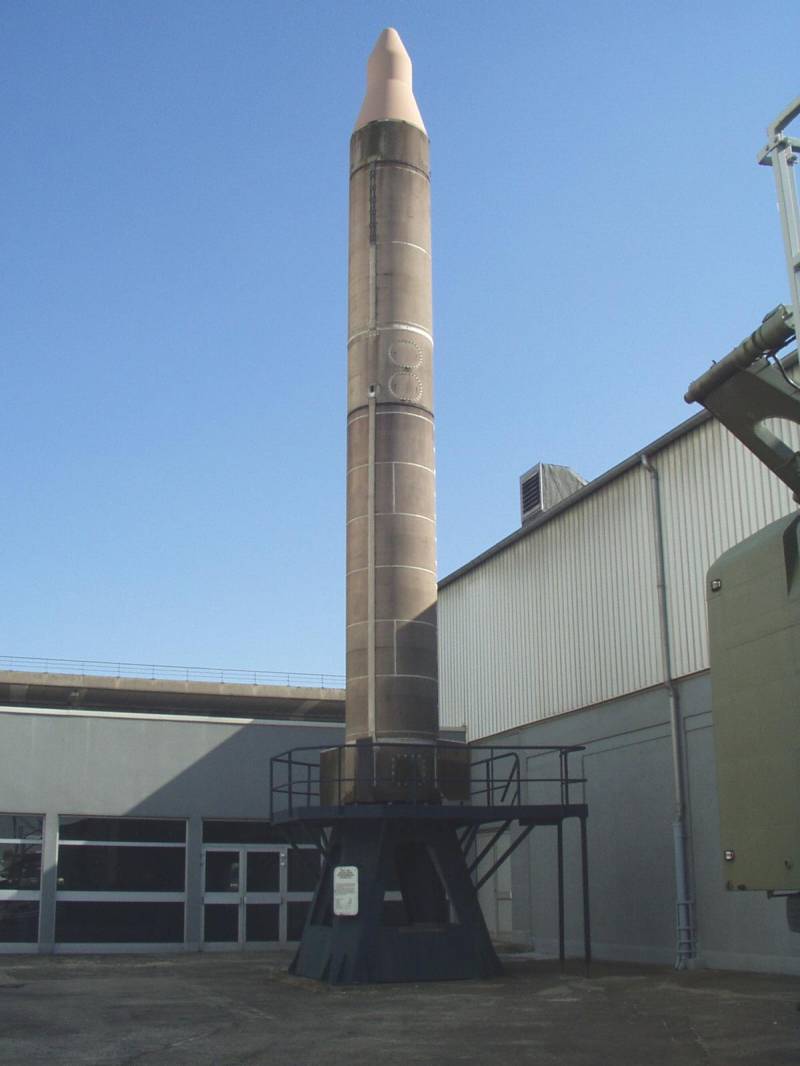
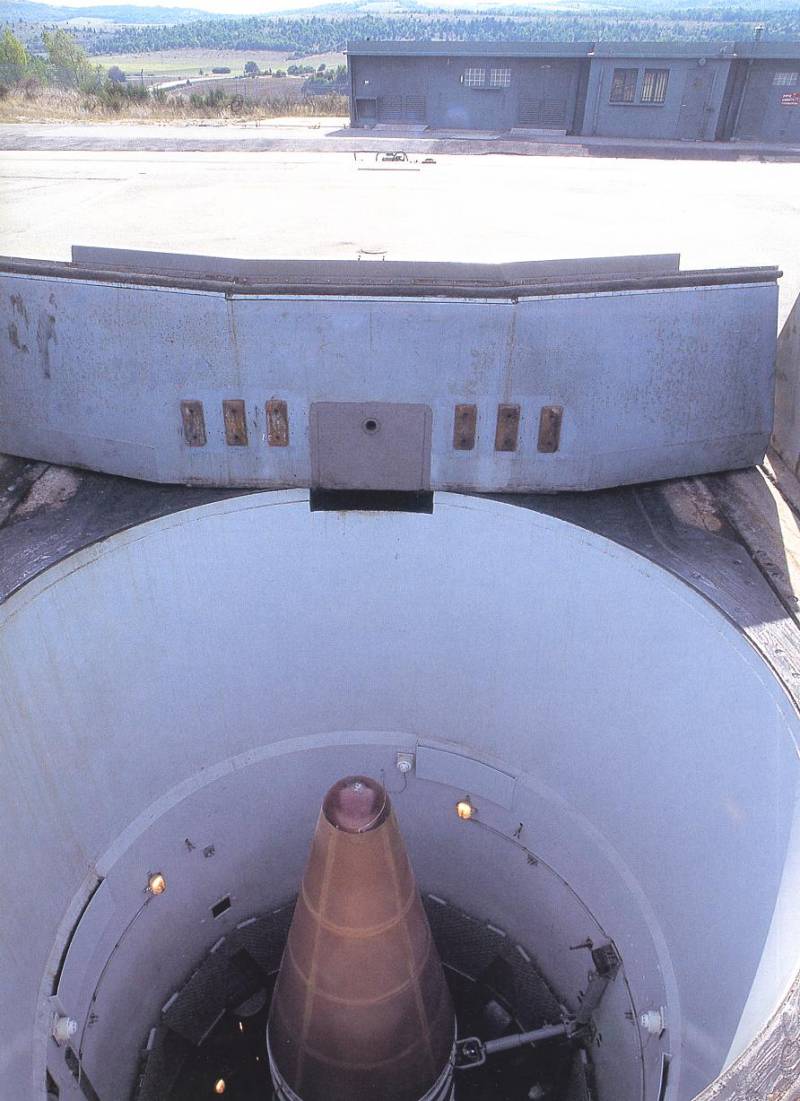
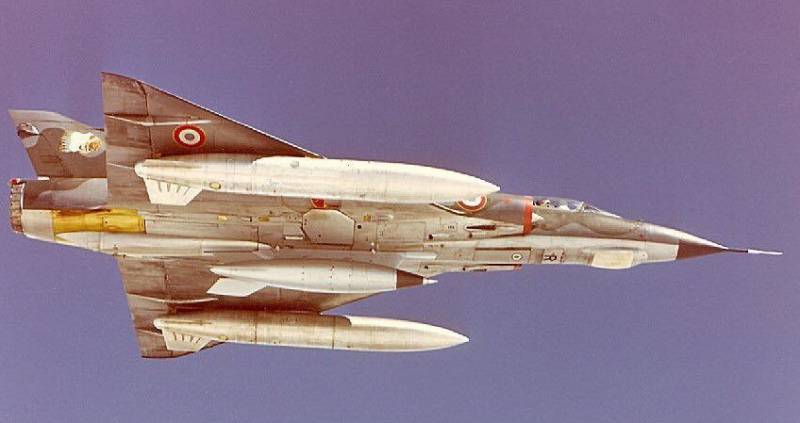
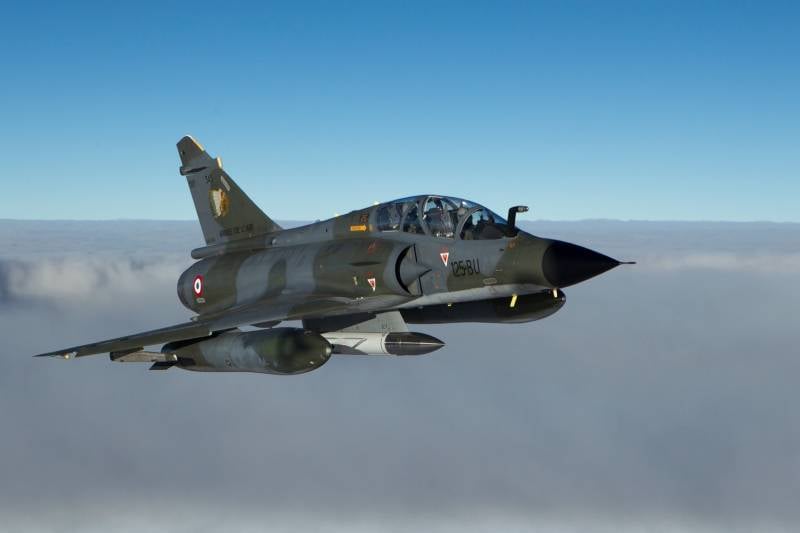
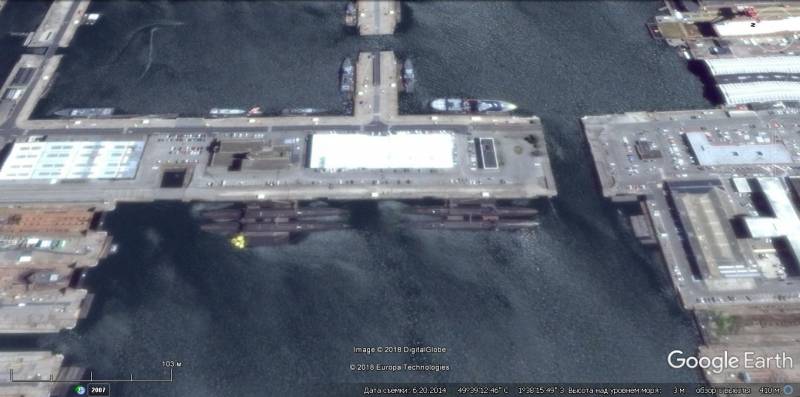
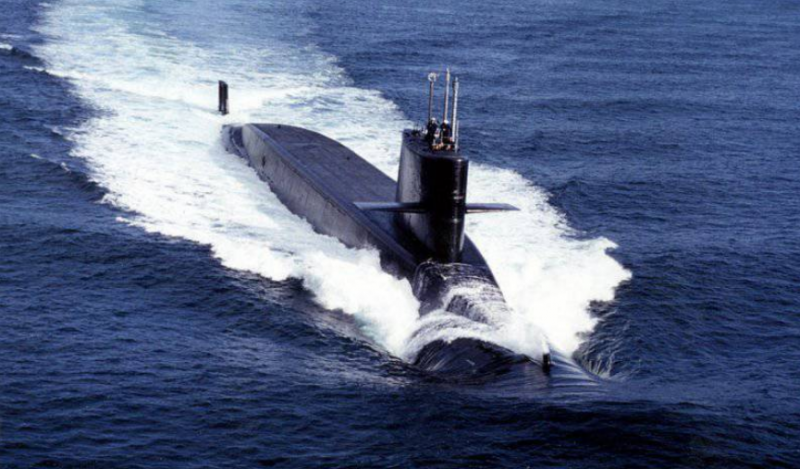
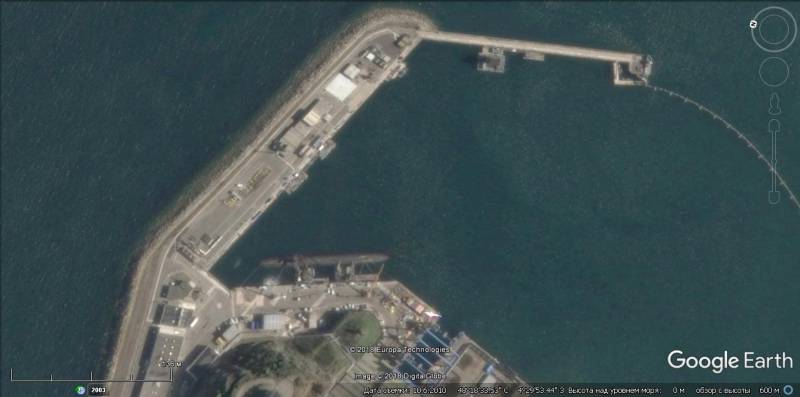
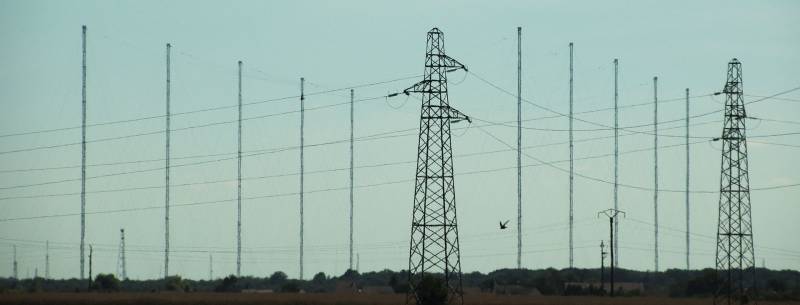
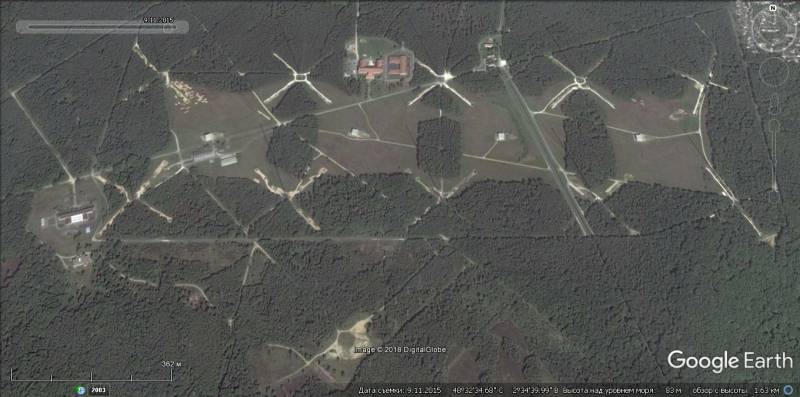
Information